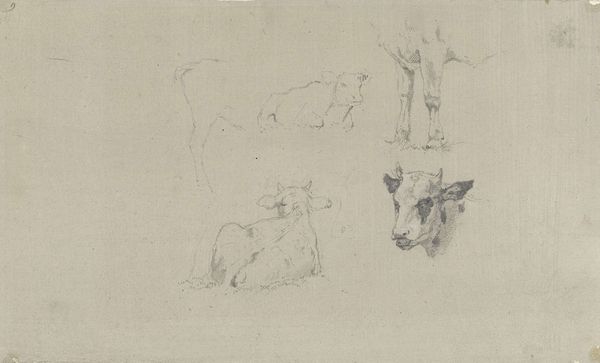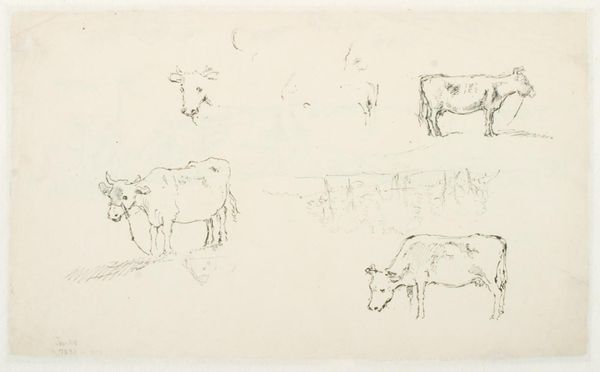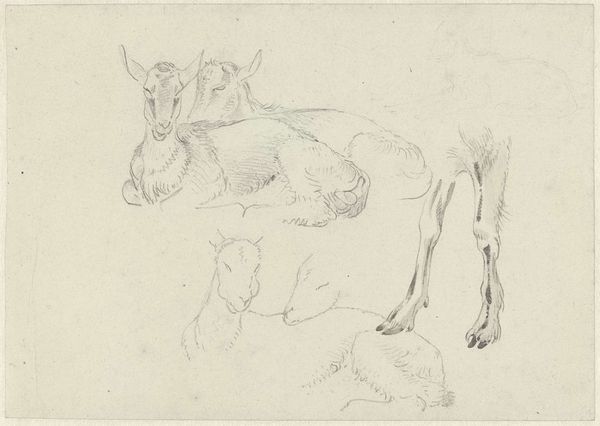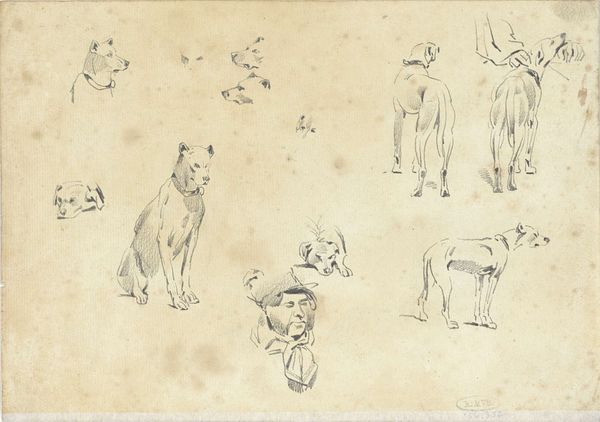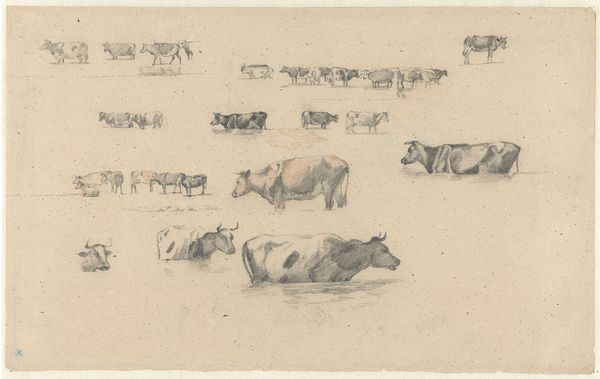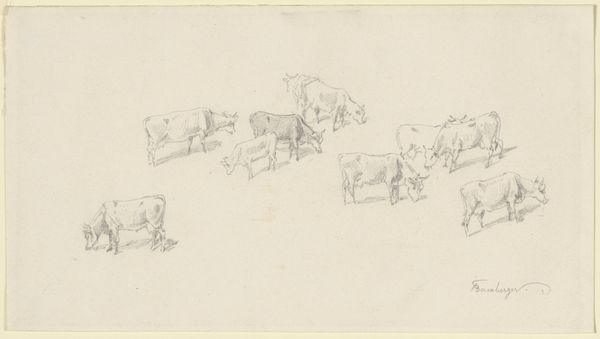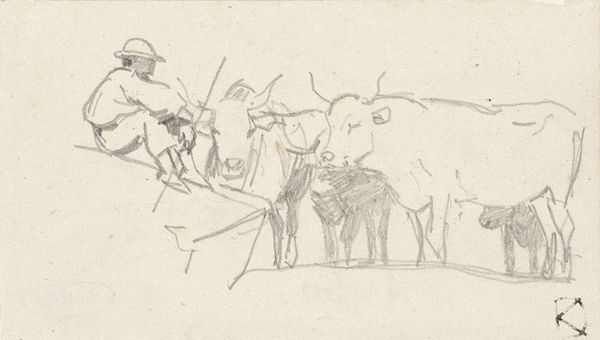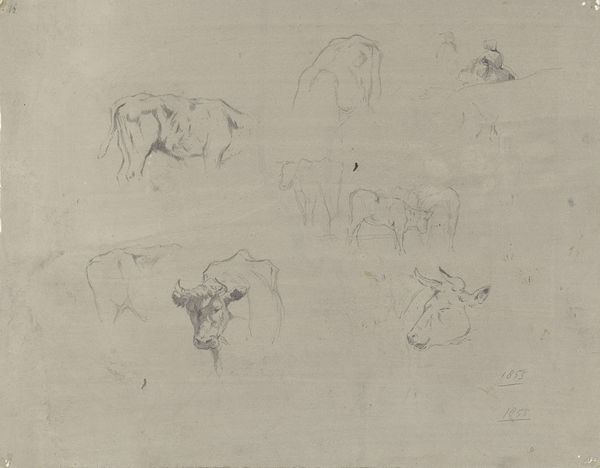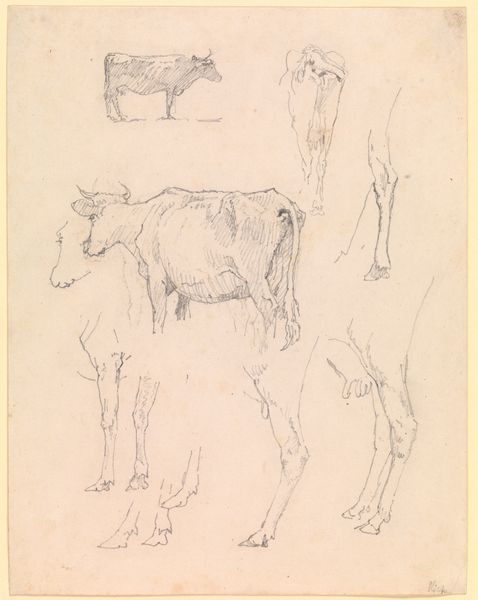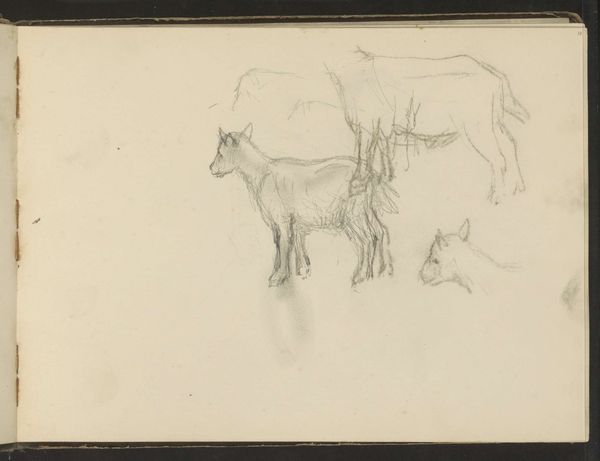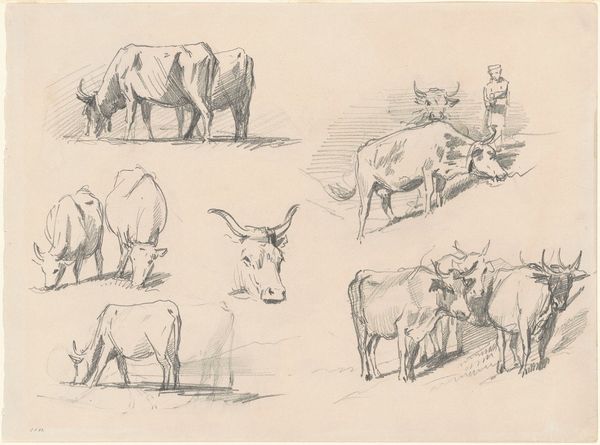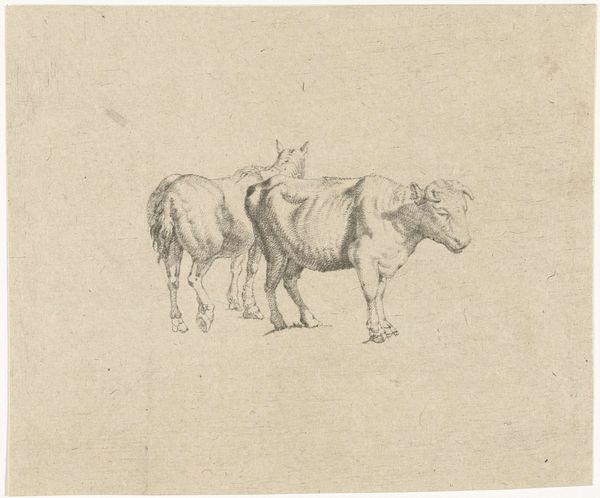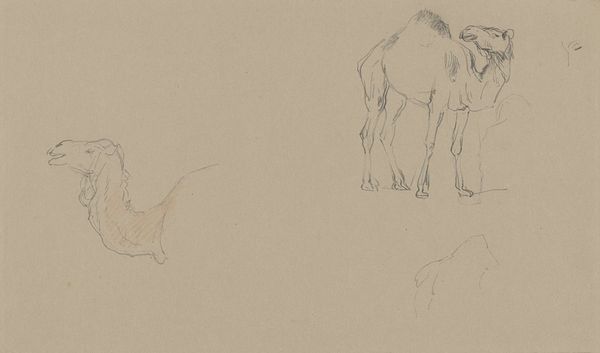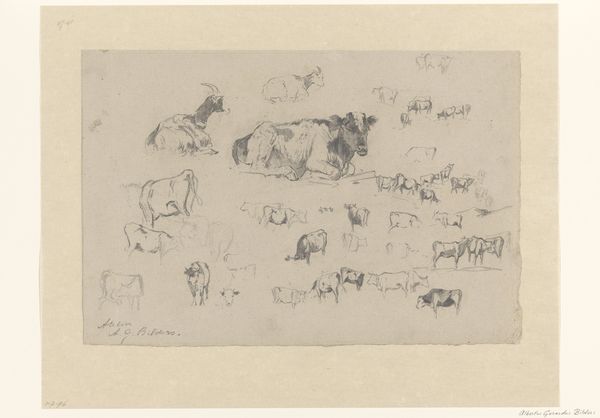
Studies van onder andere een ezel, een hond en een trompetter 1848 - 1865
0:00
0:00
drawing, paper, pencil
#
drawing
#
quirky sketch
#
animal
#
dog
#
landscape
#
paper
#
personal sketchbook
#
idea generation sketch
#
sketchwork
#
dynamic sketch
#
pen-ink sketch
#
pencil
#
sketchbook drawing
#
genre-painting
#
storyboard and sketchbook work
#
fantasy sketch
#
realism
#
initial sketch
Dimensions: height 205 mm, width 301 mm
Copyright: Rijks Museum: Open Domain
Editor: This is "Studies van onder andere een ezel, een hond en een trompetter" - studies of, among other things, a donkey, a dog, and a trumpeter – by Gerard Bilders, dating from around 1848 to 1865. It's a drawing on paper with both pencil and pen-and-ink. I find the composition really intriguing – almost like a page from a personal sketchbook. What catches your eye in this work? Curator: What immediately stands out to me is its informal, almost diaristic quality. We see a variety of subjects rendered in a seemingly off-the-cuff manner, inviting us into the artist’s world. This era saw a rise in Realism, an urge to capture everyday life, wouldn’t you agree? These sketches aren't grand narratives but glimpses into daily existence. It's interesting to consider where these figures might appear in Bilders’ more formal paintings. Do you get a sense of a public versus private artistic practice? Editor: I do. It’s like seeing behind the scenes. Were sketchbooks common among artists then? Curator: Absolutely. Sketchbooks served as crucial tools. They allowed artists to experiment, to hone their observational skills, and, importantly, to accumulate a repertoire of motifs that could be deployed in more formal, public-facing works. How does this inform your impression of Bilders’ creative process? Editor: I guess I see it as less spontaneous and more methodical than I originally thought. He’s actively building a visual vocabulary. It does make you wonder about the social status of the figures, and their representation at this time... Curator: Precisely! And think about how the art market at the time valued finished paintings over preliminary drawings. It gives us insight into the economic realities that shaped artistic choices. Editor: That's a great point. I hadn’t thought about that hierarchy. Now I appreciate the social and historical factors that informed Bilders' work, even at the sketch level. Curator: Indeed, it’s fascinating how even seemingly informal sketches can reveal the intricate connections between art, society, and the artist's public role.
Comments
No comments
Be the first to comment and join the conversation on the ultimate creative platform.
